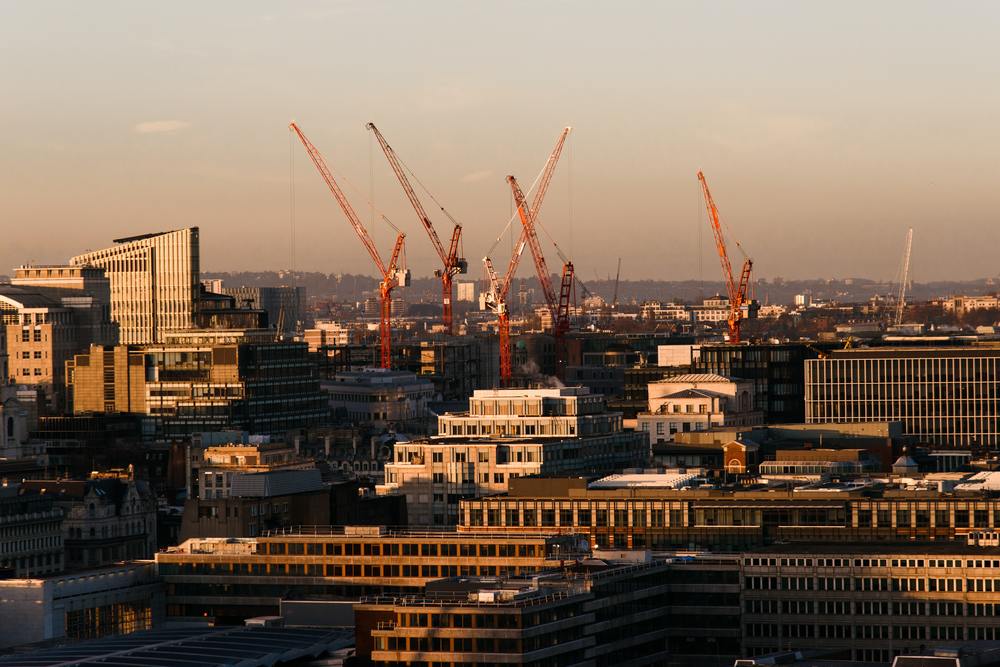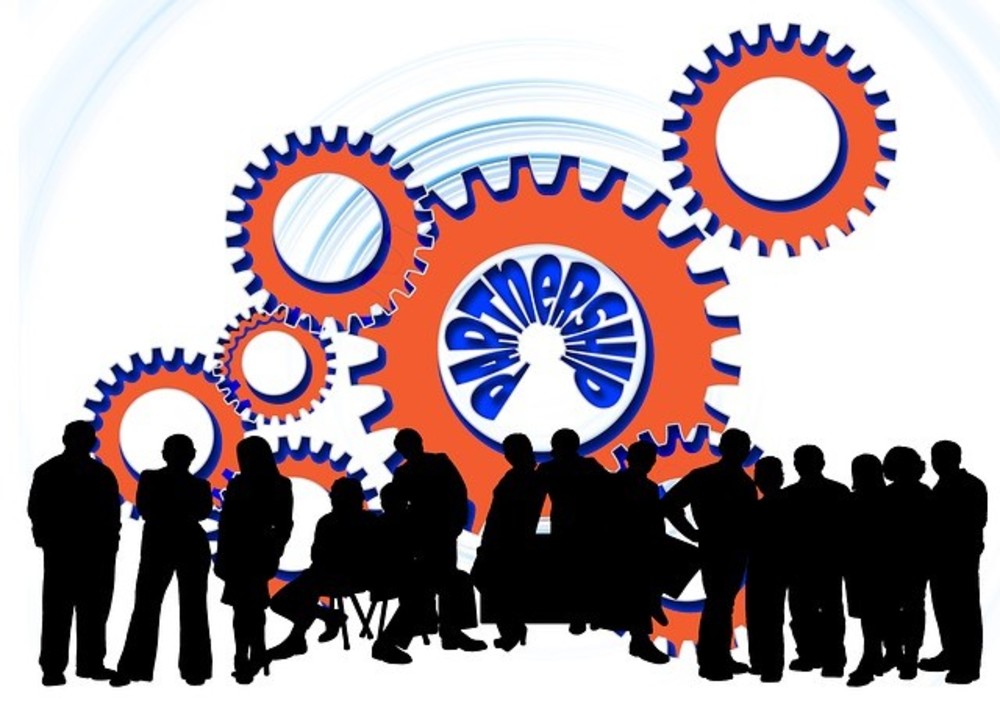This article is part of a blog series on supply chain issues. The impact of COVID-19 on the supply chain, in the construction industry, as well as the war in Ukraine, are still very much felt in 2024. Inflation is high, and the industry is experiencing a lack of resources both in terms of labor and material.
The construction supply chain (CSC) involves many stakeholders such as the owner or client, the architect, and diverse types of engineers bringing goods, materials, and trade services to the construction site to ensure a building and construction project is successful. All stakeholders play a key role in sustainability. Every project requires money, and a comparative analysis of the Value for Money (VfM) framework should be conducted to achieve sustainability in the delivery of your projects.
The sustainable development goals (SDGs) were adopted by the United Nations member states in 2015. The aims are to end poverty, protect the planet, and ensure that all people enjoy peace and prosperity by 2030.
The SDG's 17 goals are interdependent to make sure that, when you take an action somewhere, you do not negatively affect another area.
Any construction project should balance social, economic, and environmental factors.
Sustainability means that you accept that you have a duty, both moral and legal, to act ethically and responsibly, to reduce the negative social and environmental impacts of your operations on the climate. You also agree to protect your reputation and your profitability.

All stakeholders, clients, investors, employees, and communities expect construction companies to implement sustainable best practices to demonstrate that they are willing to protect their profits, their people, and the planet.
Declining to address sustainability issues may put your business in jeopardy. You could lose your competitive edge as your ability to win new projects reduces. You may break laws on issues like pollution prevention or modern slavery.
Putting sustainability at the forefront of your supply chain management is not negotiable anymore because the construction industry is creating high quantities of waste, generating carbon dioxide emissions and other greenhouse gases, negatively impacting climate change.
The sector consumes copious amounts of energy, not just on-site, but also to manufacture the products used in building.
Managing sustainability with your partners is difficult as they may be reluctant to reveal their relationships to protect their commercial advantage. This is injecting uncertainty in the supply chain due to a lack of clarity and augmenting risks for the exploitation of human rights and corruption.
To be a responsible sustainable company, you should follow the laws and regulations regarding human rights exploitation, the environment, and industry standards such as the Common Assessment Standard to boost sustainability in the construction industry.
To reduce the negative environmental and social impacts that your business and supply chain relationships can inflict on the planet, you should construct assets that are resilient and efficient, and support communities by choosing to use locally based supply chain partners.
Introducing the protection of the environment in your supply chain policies will reduce the negative impact your organization may have on employees, local communities, and wider society.
In 2020, the municipality of Amsterdam had to adopt a new strategy to recover from the pandemic crisis. They used the concept of the “Doughnut Economy” and adapted it to the size of a city, with the help of the British economist Kate Raworth, who developed the model.
The purpose of the model was to produce strategies to deliver a good life to the Amsterdam citizens, without damaging the planet. It has been such a success that the model is now used in many other cities.

All construction types have, during their life cycle, a negative impact on the environment. So, it is the responsibility of the construction industry to lead the way, globally, to fight issues related to climate change and protect the planet.
Some statistics from the United Kingdom show that buildings and other assets use a lot of energy over their lifetime:
Sourcing materials irresponsibly could damage the environment and biodiversity. For instance, you should only buy certified timber from responsible arboriculture organizations applying environmental and social responsibility policies to their processes to protect the planet.
FSC, a global forest certification system established for forests and forest products can help you support the use of responsibly produced timber.
Construction projects use a lot of water. For example, In the United States, the construction industry uses 15% of the total public water supply. According to the World Green Building Council, water recycling systems in buildings may save up to 50% of water usage.
A lot of regions experience water shortages aggravated by climate change. Unless actions are taken, these regions may not be able to meet water requirements in 20 to 25 years.
You should be aware that materials manufactured offshore may use water and could generate pollution.
Sustainability includes social responsibilities. This means that, throughout your supply chain, you should ensure that workers are adequately remunerated, human rights are respected, health and safety policies are in place and applied to all laborers, and that unreasonable long hours are the exception, not the rule.
Unfortunately, modern slavery is growing worldwide. It is hard to identify where and if exploitation takes place in the supply chain in construction, as it lacks clarity and visibility. It involves many organizations, large and complex processes, many subcontractors, and a lot of labor agencies.
“Trafficking in persons,” “human trafficking” and “modern slavery” are used as umbrella terms to refer to both sex trafficking and compelled labor.
In the USA, The Trafficking Victims Protection Act of 2000 punishes trafficking in persons, especially women, and children. The United Nations Convention against Transnational Organized Crime (the Palermo Protocol) uses other terms to describe modern slavery like involuntary servitude, slavery, or practices like slavery, debt bondage, and forced labor.
Traffickers use various bullying and ambiguous practices to deprive their victims. Workers may be considered trafficking victims regardless of whether they were born into a state of servitude, were exploited in their hometown, were transported to an exploitative situation, had previously consented to work for a trafficker, or had participated in a crime as a direct result of being trafficked.
Clients and their stakeholders use sustainability to enhance their reputations. They now introduce clauses in their contracts aiming to protect the environment, enhance the welfare of people, and implement sustainable business practices.
Green sustainability is growing in the construction supply chain and if you want to succeed you should prioritize it to fuel your growth and expansion by complying with international laws on sex trafficking and putting clear policies, processes, and guidance in place to eradicate exploitation.

Improving your business’s sustainability is an opportunity for your organization to make a real difference. Let us have a look at how it can improve your work.
In the United Kingdom, in 2022, 520 construction contracts for a total value of $4.2bn and ranging from $15,000 to $150m, were analyzed to find how much social value the country produces. The findings show that the construction industry invested in community changes that impacted people’s lives. The return on investment was up by more than 10% compared with the previous year.
Suppressing the negative impact your business imposes on the planet, and concentrating on the positive societal and environmental aspects of your operations will generate a lot of benefits that will help your organization reduce your costs, minimize your carbon footprint, and lower the number of potential accidents in your organization which will decrease your insurance fees.
You will eliminate waste which will lower your cost of non-compliance, helping you to avoid fines and compensation payouts by adopting sustainability legislation.
Your reputation and revenue will increase, boosting your professional statute that will win you more projects, gain customers’ trust and loyalty, and help you to market your business to new customers. Introducing risk management systems in your organization would avoid potential threats to people and the environment, increasing your chances of success and opportunities.
Your employees will be proud, happy, and satisfied to work for a sustainable organization. It will improve your employee attraction, satisfaction, and retention and boost your productivity.
To secure funding, adopting sustainable practices and minimizing your environmental and social impact will appeal to investors.
It is challenging to introduce environmentally and socially responsible policies in your supply chain processes.
You should identify, in the various stages of your operations, the impacts they have on the environment, be they social or economic.
You should then plan your implementation including all your supply chain stakeholders. Do not forget your clients to make sure you can respond to their requirements.
In your workflow, you should introduce ethical sourcing practices throughout your entire supply chain, streamline your processes, reduce the environmental impact of transportation, eliminate waste by introducing a good planning system like Plannerly, and increase your visibility and clarity by automating your processes

Implementation of supply chain management in the construction industry is still lacking momentum.
The necessary sustainability components are environmental, social, and financial.
Many challenges are still to be surmounted like inefficiencies in the logistics system, shortage of funding, environmental issues in demolition procedures, and difficulties in applying sustainability measures due to high skill, data, and time requirements.
Potentials for improving the current situation in the construction industry are enormous such as increasing investment in energy conservation, adopting emission reduction technologies to drive sustainable development, establishing strong green supply chain relationships, and forming a financial support group for small construction companies.
The long-term relationships between construction companies, suppliers, and customers require implementing best practices and new smart technologies to simplify and streamline the supply chain process.
The following steps can help you build a sustainable supply chain by:
Most firms intend to establish their best practices, but work gets in the way, and they are never created. As a result, there are people solving problems that others have already solved. Do not fall into that trap!
Driving Vision's BIM expertise diagnostic looks at how you can eliminate waste (time and material) and improve your margins and the quality of the information provided during the design and construction phases.
A Driving Vision expert will conduct the interviews online and will issue a report and discuss our findings with you. Together we will decide the best way to implement the solutions at your pace and according to your budget.
Implementing BIM can be daunting, but Driving Vision is here to help you at the pace you are comfortable with. Get started by getting in touch now
We simplify the difficult and automate the mundane for an affordable fee
We become your BIM coordinator & Tech support for an affordable fee
We give you access to our CAD licenses for an affordable fee
We introduce you to our cloud technology and proprietary immersive technology for an affordable fee
